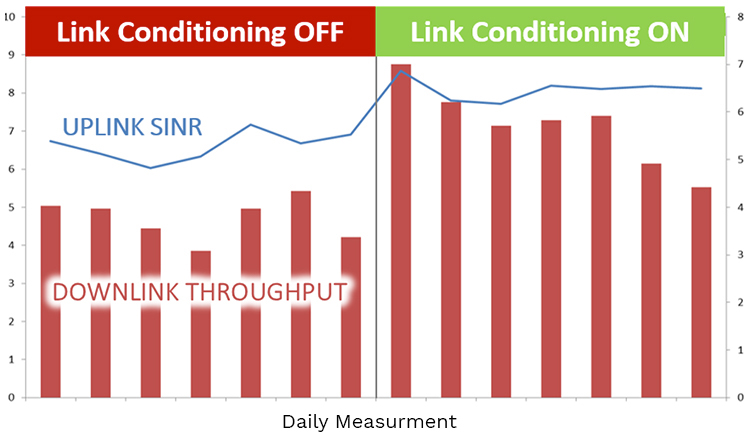What is SINR?
SINR (Signal to Interference & Noise Ratio) measures signal quality: the strength of the wanted signal compared to the unwanted interference and noise. Mobile network operators seek to maximize SINR at all sites to deliver the best possible customer experience, either by transmitting at a higher power, or by minimizing the interference and noise.
In communications theory, the Shannon’s Limit is the theoretical maximum bandwidth of a channel and is a function of the SINR. Thus, optimizing SINR leads to more base station capacity, allows higher order QAM modulation (which are more spectrally efficient), resulting in higher peak data rates, fewer dropped calls, and ultimately improved customer satisfaction.
All types of interference are reflected in the SINR value. For specific types of interference also see:
Common Sources of Interference and Noise
High traffic volume
High density of cell sites
Small cells and DAS
TV broadcast towers and CATV amplifiers
ICI (inter-cell interference) at the cell edge
Passive Intermodulation (PIM)
Other mobile operators and licensed users
Military communications
Why Optimize SINR?
Poor network quality is the second or third reason most cited by subscribers when asked why they switched to another mobile network operator. While different metrics are and can be used to indicate network quality, SINR is one of the most fundamental and useful. Similar to how a person’s body weight is indicative of susceptibility to a wide range of health issues, SINR is an excellent indicator of overall network health.
A healthy SINR is critical to maximizing data capacity and throughput. Even though two subscribers may use the same amount of spectrum (i.e. the number of OFDMA sub-carriers), their respective signal quality (SINR) determines their throughput. This is because the higher the SINR, the higher the QAM modulation that can be achieved, and hence the higher the data rate that the subscriber will experience. In the lower frequency bands and for busy cell sites, a low SINR has an outsized negative impact so SINR optimization is particularly important in these cases.
Case Study
High Traffic Sites
The Problem
A Tier 1 US mobile operator was experiencing poor KPIs at busy sites located near a major tourist attraction.
The Solution
ISCO’s Link Conditioning was deployed on 159 LTE sectors, with the goal of a 10% improvement in KPIs.
The Outcome
+17% Downlink traffic volume
+16% Downlink throughput
+53% Uplink traffic volume
+8% Uplink throughput
+14% Average # of subscribers
Benefits of ISCO’s Link Conditioning®
Deliver more traffic
Improved throughput means a better customer experience. In addition when adding a new RF carrier to upgrade capacity at a busy cell site is being considered, the use of Link Conditioning to improve capacity can defer the immediate need for an upgrade.
Better performance at the cell edge
The larger the overlap between two cells, the greater the possibility of Inter-cell Interference (ICI). In urban areas with a high density of base stations, up to 30% of a sector’s footprint may overlap with other sectors. In such cases improving cell edge performance leads to a significant improvement overall.
Improved spectral efficiency
Wireless spectrum is a mobile network operator’s core asset and must be managed carefully. This is particularly true for low and mid frequency bands, which are already crowded and will continue to be so despite the availability of new spectrum from spectrum auctions.
How it Works
The Link Conditioning® algorithm analyzes each connection and MIMO path independently, looking at the signal within each PRB to determine the types of interference present in the uplink. This granular approach is combined with macro level analysis across the band in order to apply the appropriate set of SINR optimization techniques. The algorithm adapts automatically as RF conditions change.
